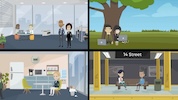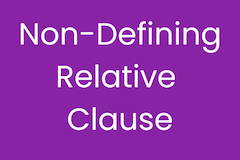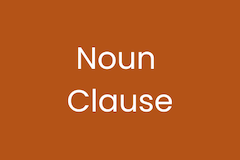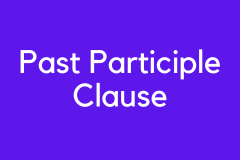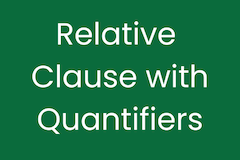Present Participle Clause
Listen to four conversations using the grammar point.
Answer the following questions about the interview.
Present Participle Clause
Point 1: The present participle relative clause gives more information about a preceding noun. It acts like an adjective clause and uses the present participle (-ing) form of the verb.
- The woman crossing the street looks familiar.
- The movie playing at the theater is sold out.
- The car driving behind me is flashing its lights.
- The new café opening downtown is not hiring.
Point 2: The present participle relative clause omits words from an adjective clause.
- The woman (that is) crossing the street looks familiar.
- The movie (that is) playing at the theater is sold out.
- The car (that is) driving behind me is flashing its lights.
- The new café (that is) opening downtown is not hiring.
Point 3: The present participle can represent past, present, and future tenses.
- The commercial (that is) running on TV is annoying.
- The man (that was) teaching the class wasn’t very nice.
- The person (who will be) serving you is my friend.
Point 4: The present participle can replace adjective clauses in the past, present, or future simple tense.
- The man that manages the store is my friend.
The man managing the store is my friend. - The woman who helped me was rude.
The woman helping me was rude. - The woman who will help you will be here soon.
The woman helping you will be here soon.
Point 5: The present participle clause shows the noun performing the action. The past participle clause shows the noun receiving the action (passive relationship).
Present Participle Clause
- The woman looking over here acts like she knows you.
- The woman is looking over here.
- The music playing in the background is distracting.
- The music is playing in the background.
Past Participle Clause
- The items sold here cannot be returned.
- The items are sold here. (People sell the items.)
- The rumor heard on the news is not true.
- The rumor was heard. (People heard the rumor.)
